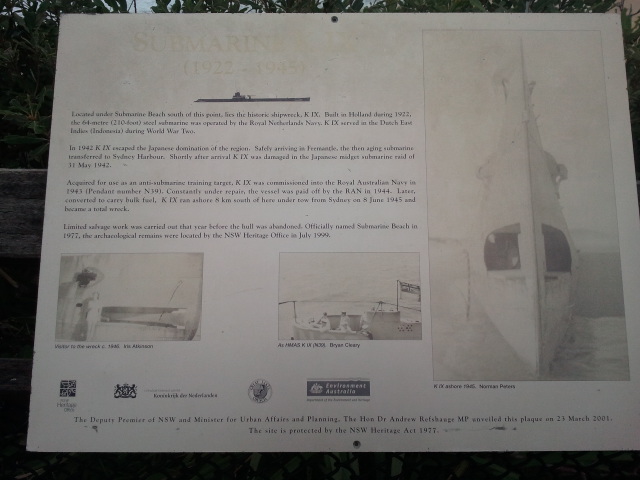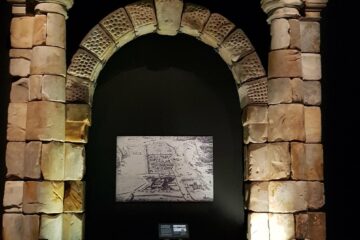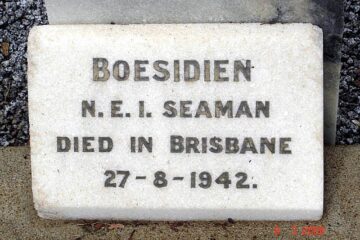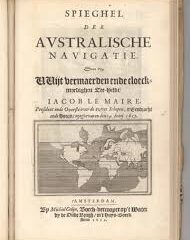
Unlike the Netherlands East Indies (NEI) Army and its Air Force, the Koninklijke Marine (KM – Royal Netherlands Navy) that operated in NEI, was part of the Dutch Navy. They resorted under the Minister for the Navy at the Dutch Government-in-Exile in London.
By mid February, the Governor the Netherlands East Indies Jonkheer (Lord) Alidius Tjarda van Starkenborgh Stachouwer ordered Lieutenant Admiral Conrad Emil Lambert Helfrich to evacuate to Ceylon in order to direct the Dutch Navy activities from here.
Most ships however evacuated to Australia, as that was much closer, In Australia the Naval Headquarters was established in Melbourne with subsidiary naval establishments in Sydney and Fremantle. The latter became the base of 15 NEI submarines. Many were lost at the start of the war, others participated in successful attacks on Japanese vessels.
About two third of all of the ships of KM were in NEI at the time of the breakout of the war here. So they were a formidable force and they were very important for the war effort of the Allied Forces.
Om January 1 , 1942 Rear Admiral Frederik Willem Coster was asked to come out off retirement and was put in charge of the Purchasing Commission In Australia, as the Netherlands and Netherlands East Indies were no longer able to supply the products and services needed for the military.
Following the Fall of NEI which led to the escape of military personnel, planes and ships to Australia Helfrich appointed him as the Commander of the Dutch Naval Forces in Australia in charge of reorganising the Dutch Navy.
He also became the Dutch representative in the South West Pacific Area (SWPA) Command, the name given to the Allied supreme military command in the South West Pacific. In his book Allies in bind: Australia and the Netherlands East Indies relations during World War Two, Dr. Jack Ford stated that by 10 June 1942, Coster’s command totaled 1,353 personnel comprising 207 officers, four midshipmen, 18 warrant officers, 241 non-commissioned officers, 144 corporals and 739 ratings/other ranks.
In May 1943 Coster retired and his position was taken over by Acting Rear Admiral Pieter Koenraad.

Several measures were implemented to enhance oversight, administration, and coordination between the Koninklijke Marine (KM) and Royal Australian Navy (RAN). Given that the majority of Dutch naval personnel were stationed in Fremantle, Western Australia, Commander Gustaaf Berg was appointed as the senior Dutch naval officer in the region from July 1942. The KM established its local headquarters by acquiring an entire floor in the Colonial Mutual Life building on St. Georges Terrace in Perth. Additionally, every major Australian port had a designated Dutch naval officer responsible for overseeing Dutch naval and merchant ships that arrived.
To ensure the efficient operation of Dutch warships from Australian ports, larger KM warships carried a British Naval Liaison Officer (BNLO) and a small team of signalmen, radio operators, and coders. For Dutch warships arriving from Europe or the Indian Ocean, an RN liaison team was initially present, but this was later replaced by RAN personnel.
The Naval Air Service
Following Japan’s attack on Pearl Harbor and the subsequent outbreak of war in the Pacific, the Netherlands East Indies (NEI) urgently sought defence aid from the United States. Among the provisions, 32 Douglas DB-7B Boston aircraft were allocated to the Dutch Naval Air Service (MLD) and the Army Aviation Corps of the Royal Netherlands East Indies Army (ML/KNIL) in NEI as part of U.S. Defence Aid in December 1941. These planes were originally destined for the British Royal Air Force but were redirected to the NEI after the fall of France and the Japanese attack on Pearl Harbor.
These aircraft were adapted for the NEI, equipped with metric instruments from a French contract, and modified for operational use by Douglas. These aircraft were eventually shipped to Java, where the Dutch attempted to assemble them amid Japanese advances and air raids. The assembly was only partially successful before the Japanese overran Java in early March 1942, leaving some of the planes unassembled or destroyed by retreating Dutch forces.
Some of the DB-7B aircraft were successfully assembled in Australia and incorporated into the Royal Australian Air Force (RAAF) and Dutch military units, continuing to serve in the Pacific theatre. A few of the planes fell into Japanese hands and were used for testing and evaluation in Japan.
After the chaotic evacuation and the dramatic destruction of many Dutch flying boats during the attack on Broome, the Navy Airforce concentrated its flying boats and personnel on Ceylon and became part of the 321 (Netherlands) Squadron RAF and was mainly involved in activities Under British command in South East Asia. One D0-24 flying boat was kept to cooperate with NEFIS and involved in intelligence missions in Dutch New Guinea and Timor. This was later extended with two more PBY-5 flying boats. Their flights generally moved up the east coast often stopping in Brisbane and Cairns before arriving in Merauke, the main town in unoccupied Dutch New Guinea. This detachment was further increased during 1945 and at that time they operated from the Qantas Airways facility at Rose Bay, Sydney. Other flyting boast were in May 1944 added to the 18 Squadron in Batchelor, Northern Territory.
The Merchant Navy
A significant contribution to the naval activities was the Dutch Merchant Fleet, one of the largest in the world and they played a crucial role in the transport of troops and material for the Allied (mainly US) forces in the Southwest Pacific. They operated from the Naval Control os Shipping (NCOS) with of fives in Sydney, Melbourne, Fremantle (this port had the largest concentration of Dutch ships), Brisbane and Townsville.
The aftermath
After the war the Dutch Navy could not immediately return to Indonesia. The Dutch didn’t have enough forces available to take over command from the Japanese, this was done by the British in their section and the Australians in the Pacific section. The Indonesian independence movement used this vacuum and this became a very violent period known ad Bersiap, where European and Chinese people were killed. This also forced many of the 100.000 women and children who were imprisoned in the Japanese camps to stay there. Furthermore back in Australia the Unions where boycotting Dutch transport to Indonesia- known as the Black Armada – as they supported the Independence movement.
Another problem were the mines that were laid by the Japanese. KM bought 8 oceangoing minesweepers from the RAN to help clearing these mines.
Between 1945 and 1947 the situation started to normalise. Naval personnel held at POWs were freed from the Japanese concentration camps and the fittest were asked to rejoin the active navy so some of the officers that had been on duty for five to eight years in Australia and had been unable to return to the Netherlands during that period could be relieved. During that period the various harbours in Australia remain a vital link in re-establishing Dutch control in the NEI. This proofed to be a futile exercise as the Indonesian people sought independence from the Netherlands, which they – after two short but bloody wars – obtained in 1949.
The submarines went back to the NEI in September 1945, the majority of the other Dutch ships followed in the first half of 1946. The Dutch depended for nearly 100% on supplies for Indonesia from Australia and the Black Armada made that very difficult. The head office in Melbourne closed in November 1946. However, Navy liaison officers were appointed and stayed in Australia. The last Navy ships left Australia in mid 1947. The last commander of the Netherlands Royal Navy was Acting Commander B.J.G. Schokking.
Farewell parties Commander B.J.G. Schokking.
Developments after the war strained the relationship between the Netherlands and Australia, as Australia started to support Indonesian independence and the Netherland vehemently try to hold on to its colony. A few years later Indonesia did get its independence, this was seen as a bitter defeat for the Netherlands as a consequence the war in the pacific was rather forgotten than remembered and the Netherlands as the fourth Ally was rapidly forgotten,
In need of a home away from home: the Royal Netherlands Navy in Australia, 1942-1947
There is also a paper from Jones, Mark C. “In need of a home away from home: the Royal Netherlands Navy in Australia, 1942-1947”. Published in the Journal of Military History vol. 85 no. 2 (April 2021): 399-425.
Brief summary: The Royal Netherlands Navy, after being driven from the NEI by the Japanese, stationed forces in Australia from 1942 to 1947. The article addresses prewar naval contacts between the KM and Australia, activities of KM ships and aircraft stationed in Australia during the war, and the KM’s postwar efforts to increase its forces and return to the NEI. The article argues that the KM presence in Australia was more important than is conveyed by the extant literature, because of Australia’s role as a wartime refuge, administration and training center, and supply source for the NEI.
For more information on this paper contact the DACC.


